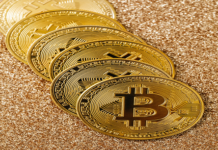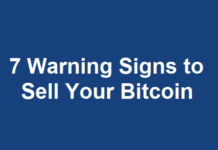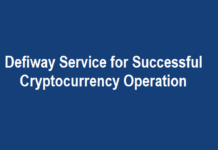
Decentralized finance (DeFi) has acquired a lot of adoption in recent years, and it is now correctly recognized in the finance industry as a better alternative to the centralized banking system currently being used. DeFi makes use of blockchain technology, and its purpose is to make financial services decentralized, accessible, and transparent.
This article explains how decentralized finance uses decentralized exchanges to improve trading systems.
Understanding Decentralized Finance
DeFi is another way of referring to applications that are built on the blockchain and give users access to several financial services without the involvement of banks and other financial institutions. These financial services include decentralized exchanges, insurance, and borrowing and lending at low costs.
This doesn’t happen in the non-crypto world, where platforms like MetaTrader 5 act as the intermediary between brokers and traders. With decentralized finance, there isn’t a need for any intermediaries.
What Are Decentralized Exchanges (DEXs)?

Decentralized exchanges are crypto exchanges that use smart contracts to execute trades without the help of a third party. This allows traders to trade directly from their crypto wallets. This exchange system gives users more control over their holdings, reducing the risk of hacking and theft.
Decentralized platforms offer more services, like yield farming and decentralized funds. Decentralized funds allow traders to invest in different digital assets managed by smart contracts. Yield farming enables people to earn money by lending or staking their digital currencies.
Some decentralized platforms offer insurance services similar to those of a typical insurance company. They make use of blockchain technology to process payouts and insurance claims automatically.
How Does a Decentralized Exchange Work?
DEXs are built on blockchain networks where traders have complete control of their assets, and all trades will come with trading and transaction fees. To use decentralized exchanges, there must be interaction with smart contracts.

The three types of DEXs (Decentralized exchanges) are DEX aggregators, Automated market makers, and Order book DEXs. These exchanges allow users to transact with other users with their smart contracts.
How To Use Decentralized Exchanges
To use a decentralized exchange, you do not need to complete any form of registration or even have an email address. You only need a compatible wallet for smart contracts on the network for exchanges. Your only essentials to enjoy the financial services available on decentralized exchanges are a stable internet connection and a smartphone.
Before using DEXs, you must determine which network you want to use. Transaction fees are determined by the network you are using. You will also need a compatible wallet to access the network and fund your transaction. Some popular wallets include Trust Wallet and MetaMask.
Some wallets have browser extensions, allowing traders to access their assets from their browsers and transact on DApps (decentralized applications). Wallet browser extensions are installed like any other extension, requiring your seed phrase to import existing balances. Your password will serve as an extra layer of security.
Some of these wallets have mobile applications that allow users to use DeFi while on their phones — a good example is TrustWallet. Wallets with mobile applications enable users to sync their devices.
You cannot use a decentralized exchange without funding your compatible wallet in the native currency of the DApp or network. Funding your wallet will allow you to pay transaction fees on the network you want to connect to. Some DeFi wallets will enable you to fund directly, while others may require buying tokens in a centralized exchange and sending them to your DeFi wallet.
When funding your decentralized wallet from a centralized exchange, you must ensure you do not send funds to the wrong network, as that will mean a loss of funds. A funded, compatible wallet allows users to connect to and interact with decentralized exchanges.
Using a Decentralized Exchange: Advantages
- Availability of tokens: Tokens are usually available on decentralized exchanges before they reach centralized exchanges.
- Lowered Risk: Crypto users who use decentralized exchanges decrease their exposure to hackers compared to centralized exchanges. Users have complete managerial control of their funds and where their assets go.
- Anonymity: Users can remain anonymous while interacting with centralized exchanges. There is no need for KYC verification or any form of identity verification.
Using a Decentralized Exchange: Disadvantages
- There is a lot to know: To use DEXs properly, you must understand how these exchanges work and how to use a decentralized wallet. Not losing your seed phrase, the best network for reduced swap fees, security protocols, and many more are very important to know.
- Decentralized Exchanges continually evolve: Many new decentralized financial services emerge periodically.
- Unchecked tokens: Anyone can list a token on a decentralized exchange. This can expose investors to lots of swap scams and rug pulls.
Conclusion
Decentralized finance is a game-changing financial innovation that uses blockchain technology to make financial services that are inexpensive, and easy to access and open. DeFi may democratize finance, create economic growth, and increase financial inclusion for underprivileged groups by removing traditional intermediaries. As DeFi gains traction, its potential to alter how we handle our finances becomes clearer.











